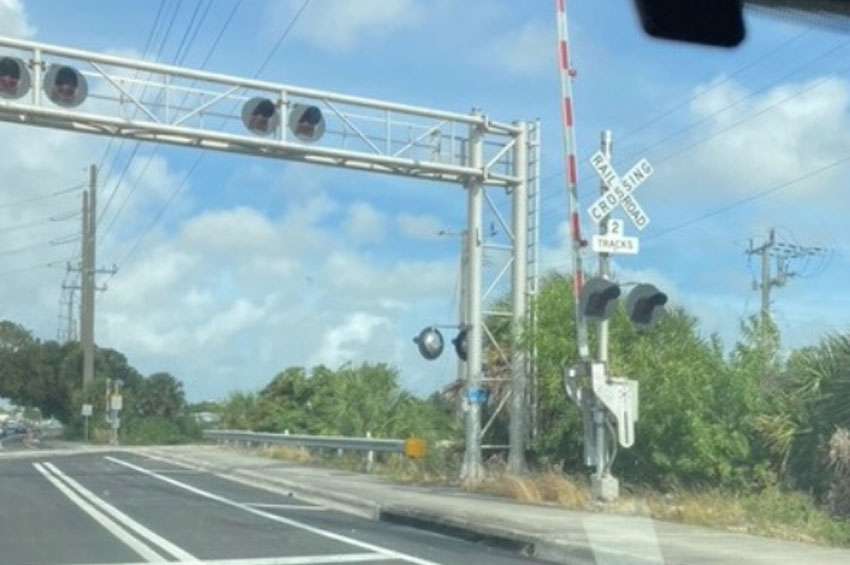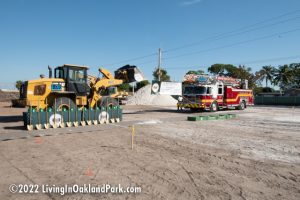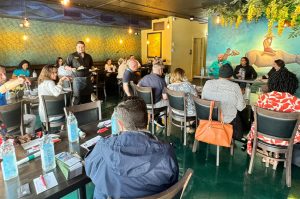Broward County has more than 100 railroad crossings, all of which are equipped with three warning signs that tell drivers, pedestrians, and bicyclists that a train is coming. These warning signs include red flashing lights, a noisy alarm bell, and gates that close when a train is incoming. Despite these warning signs, it seems as though railroad accidents and fatalities continue happening at an alarming rate.
The good news is virtually all railroad accidents are completely preventable. Every Oakland Park resident should be aware of how to stay safe near railroads.
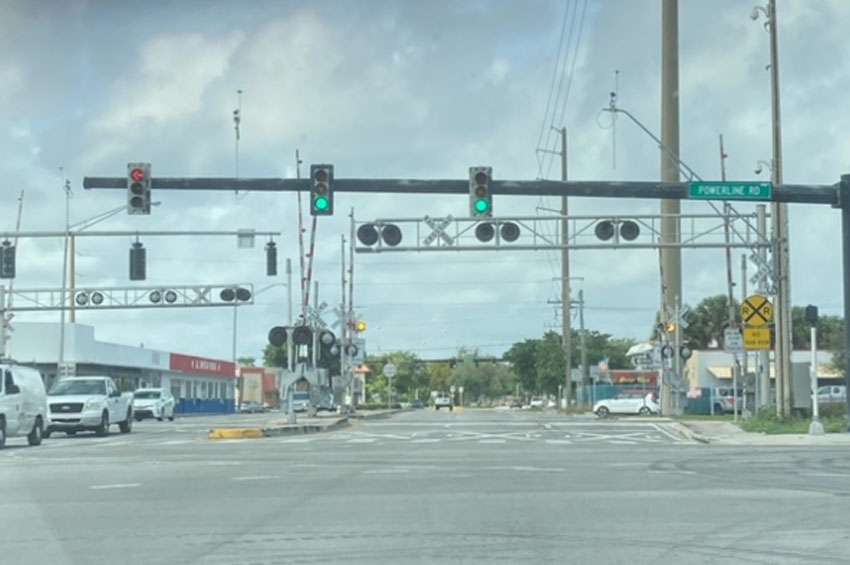
5 Railroad Safety Tips Everyone Should Follow
Between the trains, the Brightline, and the Tri-Rail, there is a lot of traffic on the railroads in Oakland Park. Knowing how to keep yourself and your loved ones safe can help prevent a tragedy. Here are 5 railroad safety tips everyone should know.
1. Don’t Try to Beat the Railroad Safety Gates and Pay Attention to All Three Warning Signs
Dealing with South Florida traffic can be frustrating. When you are on your way home from a long day at work and find yourself stuck at a railroad crossing, you may find yourself irritated and annoyed. If the alarm bells start ringing, flights begin flashing, and gates start to descend as you are approaching the tracks, you may be tempted to step on the gas and try to get across the gates before they close.
No matter how much time you think you have, this is never a good idea. Drivers who attempt to beat the railroad safety gates run the risk of colliding with the train or another vehicle. Be sure to pay attention to the three warning signs of an oncoming train and stop your vehicle as soon as the signs are activated.
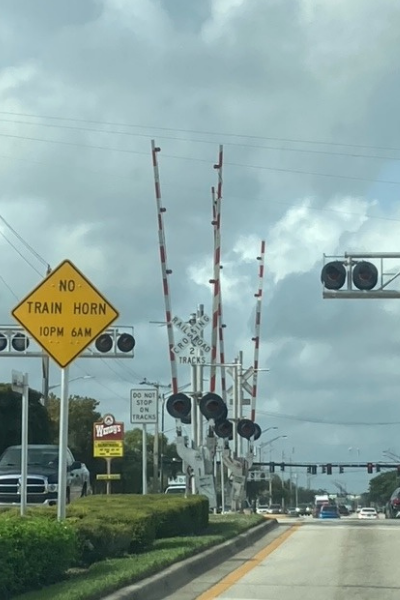
2. Avoid Walking or Jogging on the Railroad Tracks
Trains move extremely fast. If a train is coming toward you, it is coming way faster than you think. Even if you think you are paying attention to your surroundings, you shouldn’t be walking or jogging along the tracks.
Your shoe or a piece of clothing could get stuck or you could get distracted. Many walkers and joggers wear headphones that prevent them from being able to hear the train horn, too. No matter how safe you think you are being, you should never walk on the railroad tracks.
3. Make Sure You Have Plenty of Room to Cross the Tracks Before You Actually Cross Them
One major cause of railroad accidents is vehicles that get trapped on the crossing. This happens when you follow the car in front of you too closely without paying attention to the location of the railroad crossing. If the car in front of you makes it over the tracks but is unable to go any further, you could find yourself trapped in between the car in front of you and the car behind you.
Trains don’t always run on set schedules, so one could be coming at any time. The last place you want to be when the train does come is trapped on the crossing. If you are coming up on a railroad crossing, be sure to leave plenty of space between you and the car in front of you. Don’t approach the tracks until you are certain there is enough room for your vehicle to make it all the way across the tracks. Once you are 100% sure you can make it completely over the crossing, you can cross.
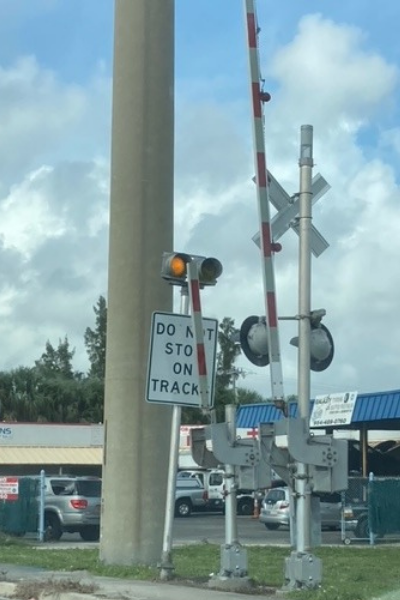
4. Don’t Cross the Tracks Immediately After the Train Comes Through
Railroad crossings that have two or more separate tracks side by side may have trains that are going opposite directions. If you are crossing the tracks, whether by foot, bicycle, or vehicle, you should never attempt to cross them immediately after a train passes through. There is a chance another train could be coming in the opposite direction and you may not be able to see that train due to the back end of the passing train.
Instead, wait until the train has passed completely, look both ways, and heed the railroad warning signs. You can also inform yourself of how many tracks the crossing has. All crossings that have multiple tracks have a sign just below the “railroad crossing” sign that indicates the number of tracks in the crossing.
It’s never safe to cross the tracks unless the gates are all the way up, the alarm bells have stopped ringing, and the red lights are no longer flashing.
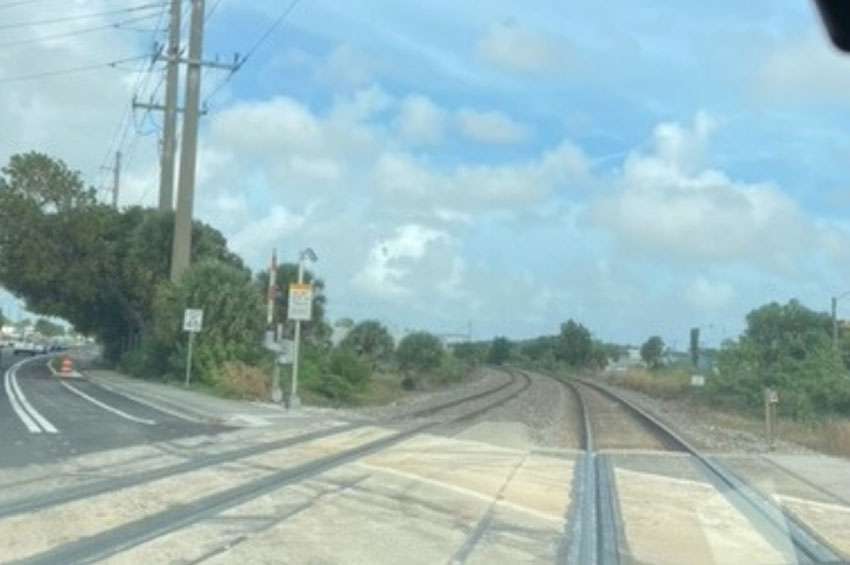
5. Check In With Your Friends, Family, and Loved Ones
According to a press release from the Broward County Sheriff’s office, Brightline has attributed 75% of their train-related accidents to mental health crises. Captain Tammy McNeal at Broward County Sheriff explained it’s important to “reach out to those members of their family, neighbors, and other community members that might be struggling with mental health concerns…a phone call or knowing they have others that care and support them might just save a life.”
If you have a loved one who is struggling with their mental health, it’s important to show them they are loved. And, if a loved one is having a mental health crisis, it’s vital to help them get the support they need. The National Institute of Mental Health reports that suicide is the tenth leading cause of death in the United States among all ages and is the second leading cause of death among individuals aged 10-34. The good news is suicide is preventable, and a brief phone call to a struggling loved one can go a long way.
Practicing Railroad Safety in Oakland Park
Start the New Year off safely by committing to staying off the tracks and practicing railroad safety. Share these tips with your friends and family so they can stay safe, too.






